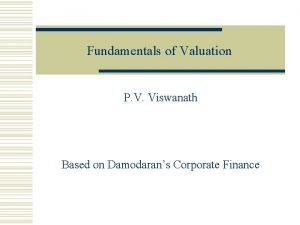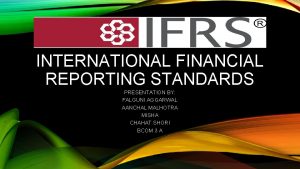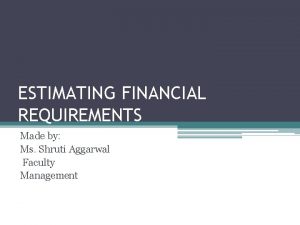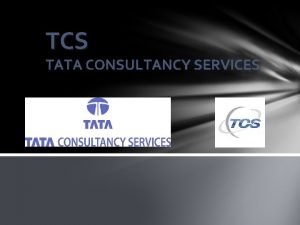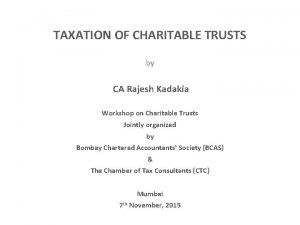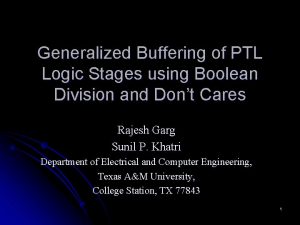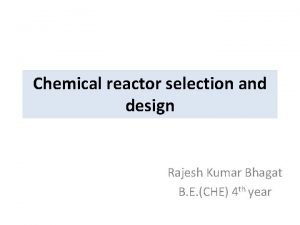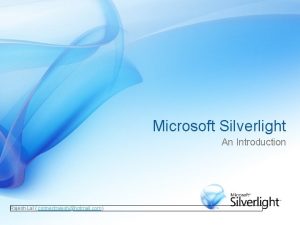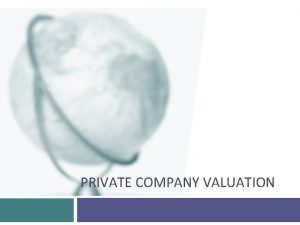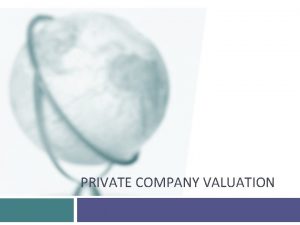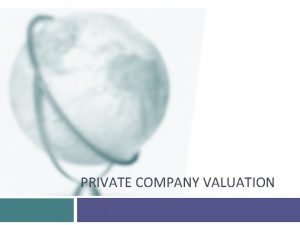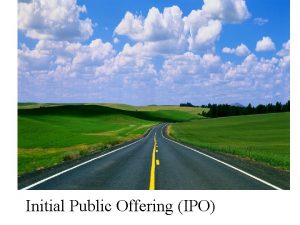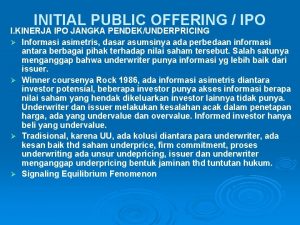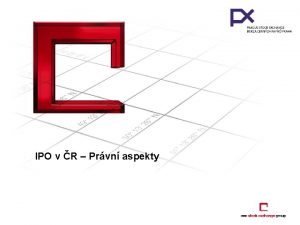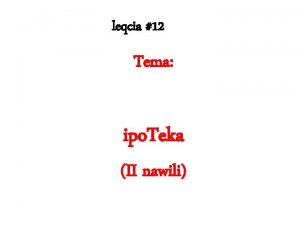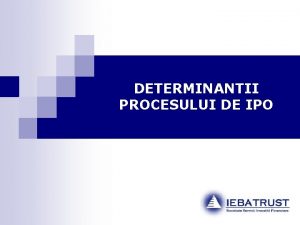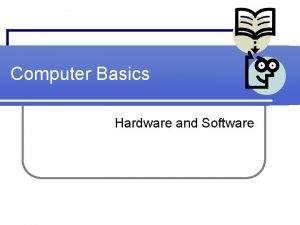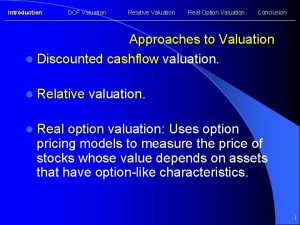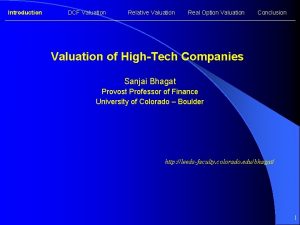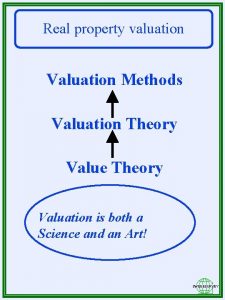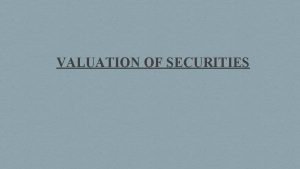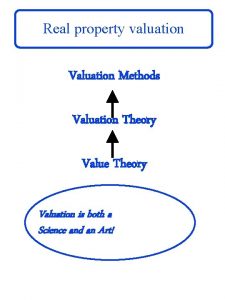Impact of Fundamentals on IPO Valuation Rajesh Aggarwal


















- Slides: 18

Impact of Fundamentals on IPO Valuation Rajesh Aggarwal Sanjai Bhagat Srinivasan Rangan 1

Discounted Cashflow Valuation where, n = Life of the asset CFt = Cashflow in period t r = Discount rate reflecting the riskiness of the estimated cashflows 2

Motivation n “Early profitability is not the key to value in a company like this (Inktomi). ” n Jerry Kennelly, Chief Financial Officer of Inktomi Inc. n “But valuations are just as often based on gut feel. As one entrepreneur told me, “Its as if everybody just settles on a number that they are comfortable with. ” n Gove in Red Herring 3

Motivation n Were traditional value-relevant variables such as income, sales and book value of equity valued differently in the boom period relative to an earlier time period for IPO firms? 4

Research Questions n Were the following variables valued differently by investment bankers and first-day investors in the boom and crash periods relative to the second half of the 1980 s? n Income n Book value of equity n Sales n R&D n Industry price-to-sales ratios n Insider retention n Investment banker prestige n Were the valuation of these variables different for tech firms, internet firms, and loss firms? 5

Priors / Expectations n Based on anecdotes, we expect that income would be valued less in the boom period relative to the 1980 s. n Based on anecdotes, we expect that sales would be valued more in the boom period relative to the 1980 s. n Given the above two priors, we expect insider retention and IB prestige to be valued more in the boom period relative to the 1980 s. n We had no priors on how things would change in the crash period, and so we let the data speak. n For technology and internet firms, we expect income and sales to be less valuable and insider retention and IB prestige to be more valuable. n For loss firms, we expect income to be valued less, and insider retention and IB prestige to be valued more. 6

Model Specification Dependent variable choices n Price-to-earnings ratios n Problem: Leads to elimination of IPOs with negative earnings from the sample. 63% of IPOs during 19972001 have negative earnings. n Price-to-sales ratios n Problem: Some IPOs during 1997 -2001 have zero or extremely small values for sales. n Price per share n Problem: Investment bankers estimate total offer value first and then partition it somewhat arbitrarily into price per share and shares outstanding. Modal offer price in our sample of IPOs is $12: Pre-IPO income for these firms ranged from -$66 million to $71 million. 7

Model Specification Dependent variable choices n Offer value in millions n Problem: non-normality. of dollars. n Logarithm of Offer value. n Logarithm of first-day Market value. 8

Model Specification Independent variables (expected signs) n Prior-Year Income (+) n Prior-Year Book value of equity (+) n Prior-Year Sales (+) n Prior-Year R&D (+) n Pre-IPO Industry median price-to-sales ratio (+) n Post-IPO insider retention (+) n Investment banker prestige (+) 9

Model Specification n Boom n Crash n Loss n Tech n Internet = 1 if the offer date is during 1/1997 -3/2000, and 0 otherwise. = 1 if the offer date is during 4/2000 -12/2001, and 0 otherwise. = 1 if income before extraordinary items is negative, and 0 otherwise. = 1 if a firm belongs a technology industry, and 0 otherwise. = 1 if a firm belongs to an internet industry, and 0 otherwise. 10

11

12

13

14

Value of IPO Income 15

Results n Contrary to anecdotes in the financial press, income of IPO firms is weighted more and sales is weighted less when valuing IPOs in the late 90 s, compared to the late 80 s. 16

Impact of Ownership Structure on IPO Valuation We substitute aggregate insider retention with ownership levels of four categories of owners. n CEO n Officers & Directors n Venture Capitalists n Other 5% Blockholders We also examine the impact of changes in percentage ownership of above four categories of owners around the IPO. n Result: Greater the post-IPO ownership, and smaller the sales by each of these four categories of owners – greater the IPO valuation. 17

18
 Jetblue airways ipo valuation
Jetblue airways ipo valuation Valuation theories of fixed income securities
Valuation theories of fixed income securities Fundamentals of valuation
Fundamentals of valuation Dipika aggarwal
Dipika aggarwal Iasb
Iasb Shruti sheladia
Shruti sheladia Shelley aggarwal
Shelley aggarwal Isolyte p composition
Isolyte p composition Naga rajesh tummala
Naga rajesh tummala Cyrus vandrevala
Cyrus vandrevala Rajesh kadakia
Rajesh kadakia Codcs
Codcs Bmi 26 female pictures
Bmi 26 female pictures Rajesh kumar bhagat
Rajesh kumar bhagat Dr rajesh batajoo
Dr rajesh batajoo Dr rajesh bharani
Dr rajesh bharani Rajesh bhaskaran cornell
Rajesh bhaskaran cornell Rajesh shah thoracic surgeon
Rajesh shah thoracic surgeon Silverlight ppt
Silverlight ppt


